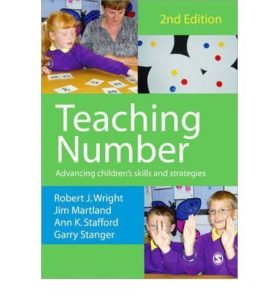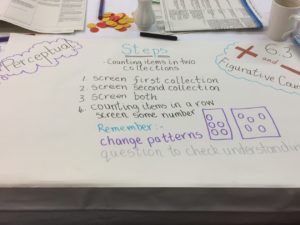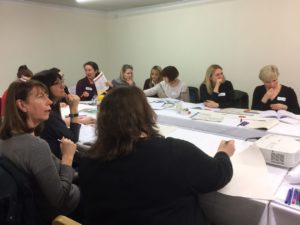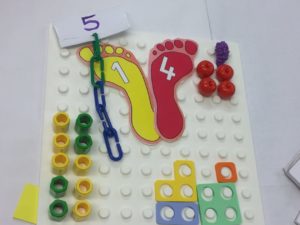What is SEAL?
SEAL stands for Stages of Early Arithmetical Learning.
In 1992 Dr. Robert Wright began developing the Maths Recovery Programme. This is an evidence based intensive assessment and intervention process for targeting pupils who are having difficulties with numeracy and maths. The underlying model for Maths Recovery was that children acquire strategies and numerical knowledge through a series of different stages – the Stages of Early Arithmetical Learning. It looks at the relative sophistication of children’s strategies for dealing with number and allows teachers to build on those skills. For example, the child who has no means of working out 9 + 3 other than counting out nine counters, then counting out three counters and then counting all of the counters from 1 to 12, is using a far less sophisticated strategy who can say 9 + 3 is the same as 10 + 12 so I know that the answer is 12. The progression of SEAL is as follows:
Emergent
Perceptual
Figurative
Counting on
Facile
Over the years it has been recognised that using the Maths Recovery approaches can promote problem solving in numeracy. By using this approach in our classes we can ensure that learners have a firm foundation for understanding number, as it ensures that their strategies are based on understanding rather than on processes or “tricks”.
To help promote this in schools, planners have been created which support the different stages of SEAL and also provide teachers with activities which help to develop children’s strategies. The planner is available to download here:
SEAL-Forward-Planners-All-stages
SEAL-Forward-Planners-blank-for-all-stages
In order to ensure that each pupil is working at the correct stage, there is also a diagnostic assessment that can be used to help which is available to download here:
The assessment is best completed on a one-to-one with each pupil and it is important not to give any visual clues or prompts. Also, try to end the assessment on a positive note by returning to an activity where they pupil has been successful. For any further support or to chat it through please contact Maria.Mcarthur2@argyll-bute.gov.uk
Once you have completed the diagnostic, or decided which planner to start on, the activities to follow with each stage can be found in the book by Robert J. Wright et al. “Teaching Number: Advancing children’s skills and strategies” and copies of this book are available at various different retailers including Amazon and Brown’s Books for Students.

At the moment we have 10 schools piloting the use of SEAL at Primary 1, with the SEAL planner replacing their numeracy work. The 10 schools are: Tobermory Primary, Salen Primary, Kilmartin Primary, Lochgilphead Primary, Inveraray Primary, Kirn Primary, Sandbank Primary, Dunoon Primary, Colgrain Primary and Park Primary. The first training day took place in September with colleagues from West Dunbartonshire Council providing the training, working closely with our own Numeracy team.

Our practitioners hard at work on the first training day.

The packs that were provided for each of our pilot schools. To find out how to order these packs please contact Maria McArthur.
Our second training day took place on Wednesday 24th January at the Inveraray Inn. The practitioners all found the session useful and commented particularly on how helpful it was to be able to discuss and share ideas with others. We are again grateful to the West Dunbartonshire Raising Attainment Team for their excellent presentation and for all of the guidance that they provided.


Lots of engaging professional discussion on using the Perceptual and Figurative planners to support addition and subtraction.

How many different ways can we make 5? Importance of using a variety of concrete materials to assess understanding.
If you are interested in using this approach in your own school, or you are looking for further support around developing SEAL then please contact Maria.Mcarthur2@argyll-bute.gov.uk
